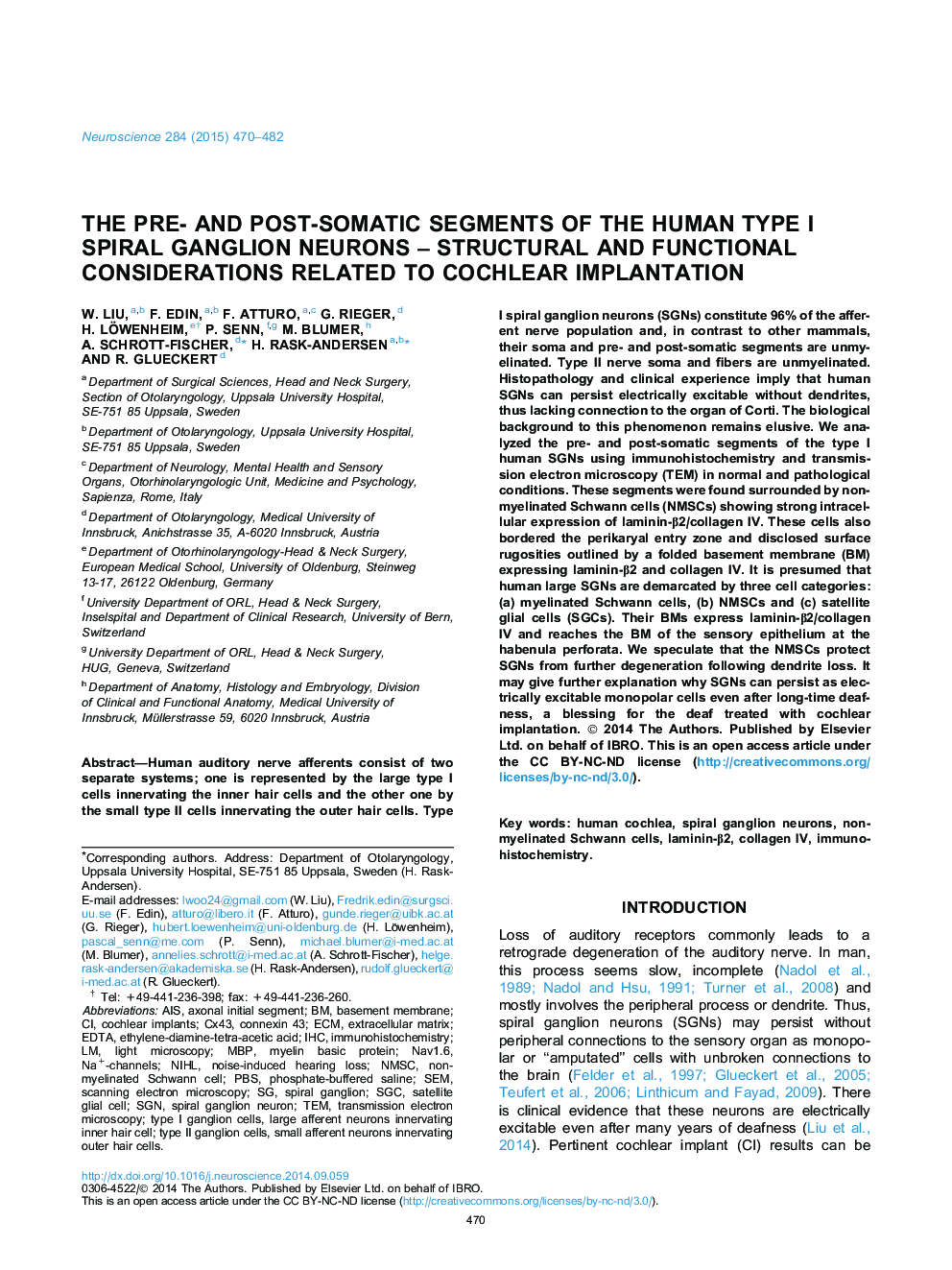| کد مقاله | کد نشریه | سال انتشار | مقاله انگلیسی | نسخه تمام متن |
|---|---|---|---|---|
| 6272863 | 1614792 | 2015 | 13 صفحه PDF | دانلود رایگان |
عنوان انگلیسی مقاله ISI
The pre- and post-somatic segments of the human type I spiral ganglion neurons - Structural and functional considerations related to cochlear implantation
دانلود مقاله + سفارش ترجمه
دانلود مقاله ISI انگلیسی
رایگان برای ایرانیان
کلمات کلیدی
ECMNav1.6PBSNMSCSGCSGNNIHLAISCX43MBPEDTA - اتیلن دی آمین تترا استیک اسید ethylene-diamine-tetra-acetic acid - اتیلن دیامین تترا استیک اسیدnoise-induced hearing loss - افت شنوایی ناشی از سر و صداHuman cochlea - انسانی انسانیImmunohistochemistry - ایمونوهیستوشیمیIHC - ایمونوهیستوشیمیTem - این استSatellite glial cell - سلول گلیال ماهواره ایbasement membrane - غشای پایهExtracellular matrix - ماتریکس خارج سلولیspiral ganglion - مارپیچ مارپیچPhosphate-buffered saline - محلول نمک فسفات با خاصیت بافریSEM - مدل معادلات ساختاری / میکروسکوپ الکترونی روبشیScanning electron microscopy - میکروسکوپ الکترونی روبشیTransmission electron microscopy - میکروسکوپ الکترونی عبوریlight microscopy - میکروسکوپ نوریspiral ganglion neuron - نورون گانگلیون مارپیچیSpiral ganglion neurons - نورونهای گانگلیونی اسپیرالMyelin basic protein - پروتئین پایه میلینCochlear implants - کاشت حلزونCollagen IV - کلاژن IVconnexin 43 - کنکنسین 43
موضوعات مرتبط
علوم زیستی و بیوفناوری
علم عصب شناسی
علوم اعصاب (عمومی)
پیش نمایش صفحه اول مقاله

چکیده انگلیسی
Human auditory nerve afferents consist of two separate systems; one is represented by the large type I cells innervating the inner hair cells and the other one by the small type II cells innervating the outer hair cells. Type I spiral ganglion neurons (SGNs) constitute 96% of the afferent nerve population and, in contrast to other mammals, their soma and pre- and post-somatic segments are unmyelinated. Type II nerve soma and fibers are unmyelinated. Histopathology and clinical experience imply that human SGNs can persist electrically excitable without dendrites, thus lacking connection to the organ of Corti. The biological background to this phenomenon remains elusive. We analyzed the pre- and post-somatic segments of the type I human SGNs using immunohistochemistry and transmission electron microscopy (TEM) in normal and pathological conditions. These segments were found surrounded by non-myelinated Schwann cells (NMSCs) showing strong intracellular expression of laminin-β2/collagen IV. These cells also bordered the perikaryal entry zone and disclosed surface rugosities outlined by a folded basement membrane (BM) expressing laminin-β2 and collagen IV. It is presumed that human large SGNs are demarcated by three cell categories: (a) myelinated Schwann cells, (b) NMSCs and (c) satellite glial cells (SGCs). Their BMs express laminin-β2/collagen IV and reaches the BM of the sensory epithelium at the habenula perforata. We speculate that the NMSCs protect SGNs from further degeneration following dendrite loss. It may give further explanation why SGNs can persist as electrically excitable monopolar cells even after long-time deafness, a blessing for the deaf treated with cochlear implantation.
ناشر
Database: Elsevier - ScienceDirect (ساینس دایرکت)
Journal: Neuroscience - Volume 284, 22 January 2015, Pages 470-482
Journal: Neuroscience - Volume 284, 22 January 2015, Pages 470-482
نویسندگان
W. Liu, F. Edin, F. Atturo, G. Rieger, H. Löwenheim, P. Senn, M. Blumer, A. Schrott-Fischer, H. Rask-Andersen, R. Glueckert,